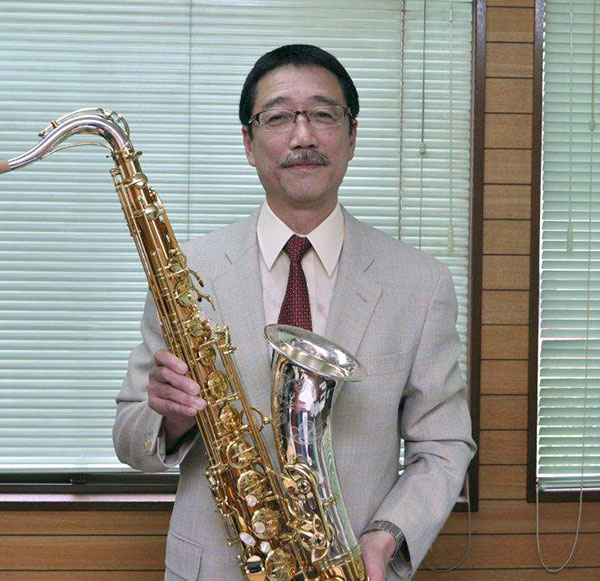Message

Message
Invented by the Belgian clarinetist Adolph Sax in 1846, the saxophones that Yanagisawa crafts constitute a relatively new addition to the family of woodwinds. Compared to the violin, piano, and other musical instruments, the saxophone as well as the compositions written for it share a relatively short history. In fact, among musical instruments, the saxophone is still in its developmental stages and has plenty of room for growth and improvement.
The history of woodwind manufacturing in Japan had its origins in 1894 when Tokutaro Yanagisawa began repairing imported woodwinds for military band members. Within that wartime setting, Tokutaro's repair shop soon evolved into an instrument factory -- the first to build woodwind instruments on Japanese soil.
Tokutaro's son Takanobu followed in his father's footsteps, choosing to pursue a career in the craft of instrument-making, and built his first prototype saxophone in 1951. Although saxophones were already being produced in Japan by then, they were little more than children's toys compared to the instruments imported from abroad. By that point in time, woodwind makers worldwide were already producing saxophones of unrivaled quality, many of which are still prized and played by performing artists even today.
The inclusion of the words "Wind Instruments" in our company name derived from a desire to produce a wide variety of woodwinds once our saxophone line had reached a certain measure of perfection. Almost 60 years have elapsed since we first began producing saxophones -- a wind instrument of world-class popularity yet arguably one of the more difficult to produce. In fact, to this day we have been engaged exclusively in the specialty manufacture of saxophones alone while holding true to the traditions and philosophy of our forebears.
Our saxophones began to approach professionally acceptable levels of quality around 20 years back. However, we have yet to produce a line of saxophones that can completely satisfy our expectations. Our experience has been one of enduring the hardships involved in cultivating a quality product. Musical instrument-making is not about producing a given form or shape but more about producing a certain sound from that form or shape. It is this creation of a desired sound or voice that cultivates the musical instrument in turn. Although that may sound irrational, I am convinced it is true.
- Can you believe that a saxophone (or any musical instrument) may be alive?
- Can you accept that the craftsman imparts his spiritual sentiments to the instrument in the process of making it?
- Take things made by hand and those made by machine. Which do you think is more likely to reflect a spirit of devotion?
Granted that the art of instrument-making has more to do with creating a certain desired sound than achieving a certain shape or form, one cannot begin to craft a quality instrument without adding a hidden spiritual dimension to the task. Although we use machinery extensively during various stages of production, the intentions and skills of the craftsmen involved in the process are the prime factors that bring each saxophone to life. Yes, we believe our saxophones are alive. Without the right frame of mind, the craftsman may master the form but still fail to give it a soul, producing nothing more than the hollow, lifeless shell of a saxophone. Musical instruments are not industrial goods. The sensitivities of the craftsman and the ability to give life to the form are essential to the art of instrument-making. That is the basic philosophy that Yanagisawa embraced in its earliest founding days and the same philosophy that we apply today, and I am confident it shines through the saxophones we make.
Appraisals are something that others must do for us; we cannot do it ourselves. Until performing artists that use saxophones as a tool tell us that our saxophones fully meet their expectations, we will persevere through sheer devotion and trial-and-error and continue to produce saxophones with an open ear to what the musician community and the instruments themselves are saying. The saxophone performance that you watch and listen to on-stage is the final stage of the instrument-making process.

CEO
Nobushige Yanagisawa,

